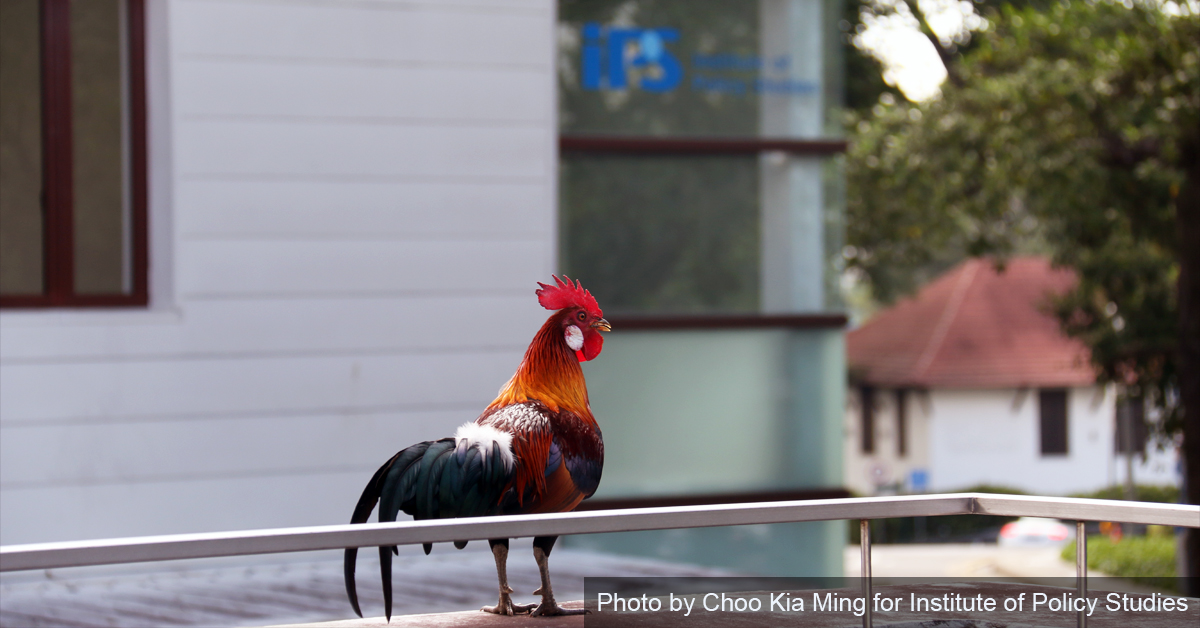
The Institute of Policy Studies (IPS) is situated in the outer environs of the Singapore Botanic Gardens. The past seven years of my association with IPS have provided me multiple opportunities to observe, appreciate and reflect on the relationship between nature and public policy.
Walking to the IPS office at Cluny Road from the Botanic Gardens MRT, and returning in the evening, has made me an everyday witness to the benign gregariousness of nature. The black swans that waded up from the lake, to walk among adults and children alike, were quite unconcerned by the fact that they lived amidst a deadly subset of the animal kingdom known as humans. Humans could kill, maim or steal them. To be unafraid was the nature of fauna such as swans, resplendent amidst the beauty of the Gardens’ flora. But the swans’ natural trust could not have been produced except through a certain process of human agency. Namely, agency in the form of public policy which bans the slaughter or theft of swans.
Public policy has been defined as the act of determining who gets what, when, and how. It is not the eternal plentitude of nature that determines the protected existence of swans in the Gardens. It is public policy that has made it so. Public policy has decided that the swans enjoy a guaranteed status of immunity, always, because of the vigilance of the Gardens staff. If that policy disappears, the swans would follow in no time. Also, flowers would be picked, trees might vanish and, who knows, I would be mugged (or mug) on my pastoral way from the MRT to IPS. Nature has produced the Botanic Gardens. Governance, the provenance of public policy, ensures the continuity of nature.
This logic holds outside the Gardens as well. Singapore’s transformation, from tropical rural paradise to urban testament in concrete, has come about at some cost to nature. Nature is gregarious, unplanned and forever incomplete. Therein lies the lure of its beauty.
By contrast, each exercise in urban planning is precise, targeted and time-bound. The exercise might or might not succeed, but it has to justify itself in cost-benefit terms. Nature owes no one any explanation: Planning owes everyone an explanation. The transformation of spaces for living, work and leisure in Singapore speaks of the power of the state to take charge of the habitat and turn it for the better for citizens.
The Gardens are a microcosm of a public policy that also has built public housing estates, broad roads and highways, and an extensive train system, all of which are carved into the natural landscape of a tiny island city-state.
However, no public policy can blunt the sharpest edges of nature. A dead parrot lay on my approach to IPS one Sunday morning. Shortly thereafter, I saw a giant monitor lizard, and thought nothing about it. When I came out of the building a few hours later, the parrot was gone. Yes, gone, devoured by nature red in tooth and claw. Nature is a chameleon. It is a trusting swan here, a sturdy tree there, a shy flower in between, a parrot that lived once, and a scavenger of carrion that will become a part of the food chain on which it thrives.
Nature can create problems which challenge public policy, of course. Once, when I was accompanying a colleague to lunch, a giant monitor lizard appeared out of nowhere to block our way near the campus’ C J Koh Law Library. Its lascivious tongue moved in tandem with its flashing eyes as it invited my colleague to join it in a reptilian kingdom free from human customs and mores. She was an intellectual and a student of drama, well versed in mixed martial arts as well; but she recoiled at its revolting sight.
She moved behind me as I gestured the lizard away violently. Its disrespect for differences of species infuriated me. I wanted to catch the intruder by its tail, swirl it over my colleague’s and my head several times in ritual benediction, and fling it away so that it could read all the books it liked in the C J Koh Library. But public policy dictates that I should treat the lizard with legalised forbearance, a quality that the law does not demand of it.
The colleague and I continued to lunch, I with a tinge of distaste in my mouth at having failed to give the lizard a “natural” reply.
Years later, though, just across the road from the library, I regained my faith in nature. The Gardens were being watered from within. Cocks and hens flew out vociferously, crossing the road to the grass verge on the other side. Only a mother hen, with her chicks behind her, kept moving on, along the concrete path. The young followed. The mother knew that they were too young to fly with her long enough to cross the road.
Public policy as it applies to the Gardens encompasses the graceful swans, the giant monitor lizard which treats nature as a source of food, and protective mother hens. In Singapore at large, public policy seeks to match economic demand and supply, personal expectations and social limitations, the riches which the world promises and the possibilities of a city that also is a state.
Nature cannot be evaded but must be incorporated into the workings of the nation-state. Ultimately, however, public policy must be protective. It must protect the mother hen who protects her chicks from us humans.
And cars must slow down as they take the metaphorical turn into Cluny Road. Humans, too, need to be protected.
The author is co-general editor of the Singapore Chronicles series published by IPS and The Straits Times Press.
Top photo by Choo Kia Ming for Institute of Policy Studies.
